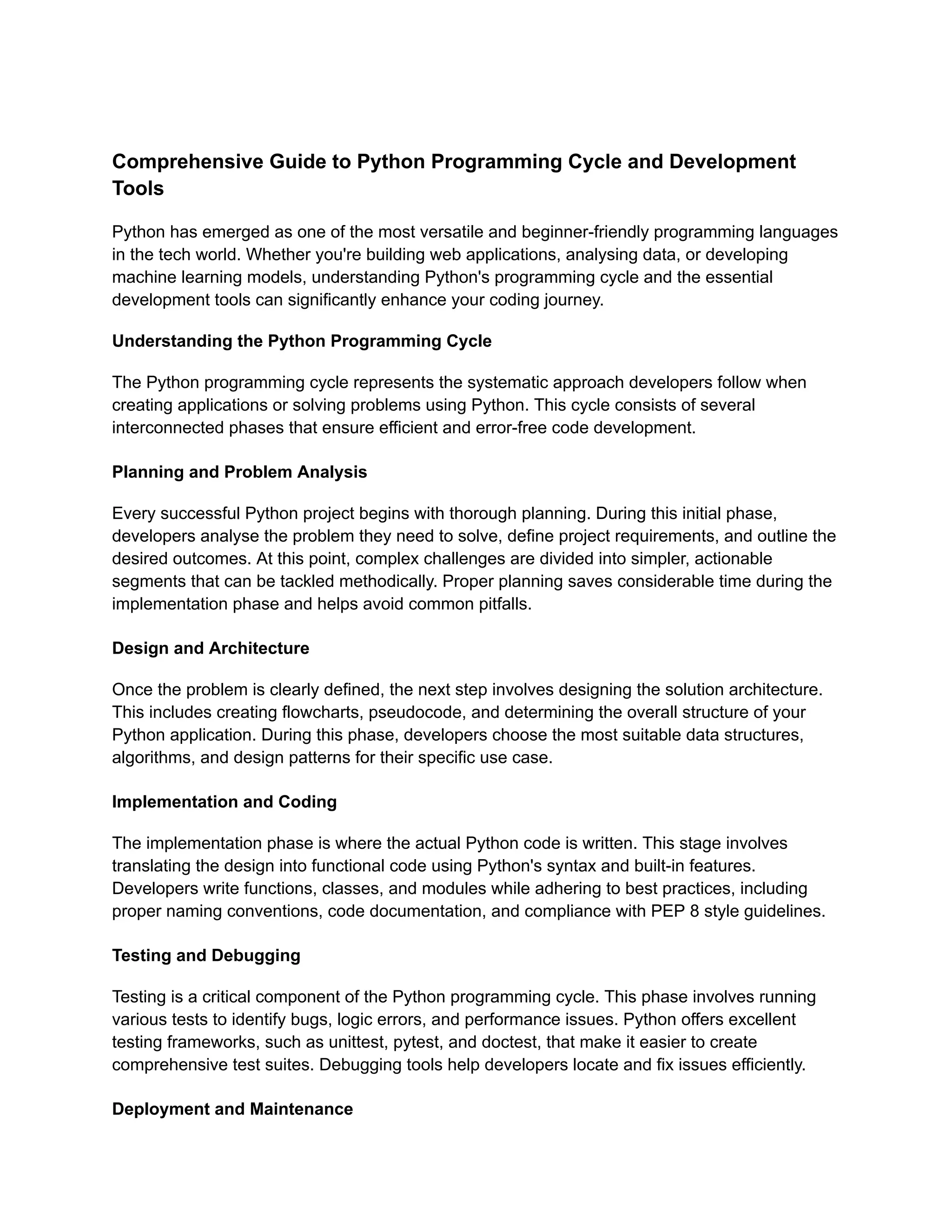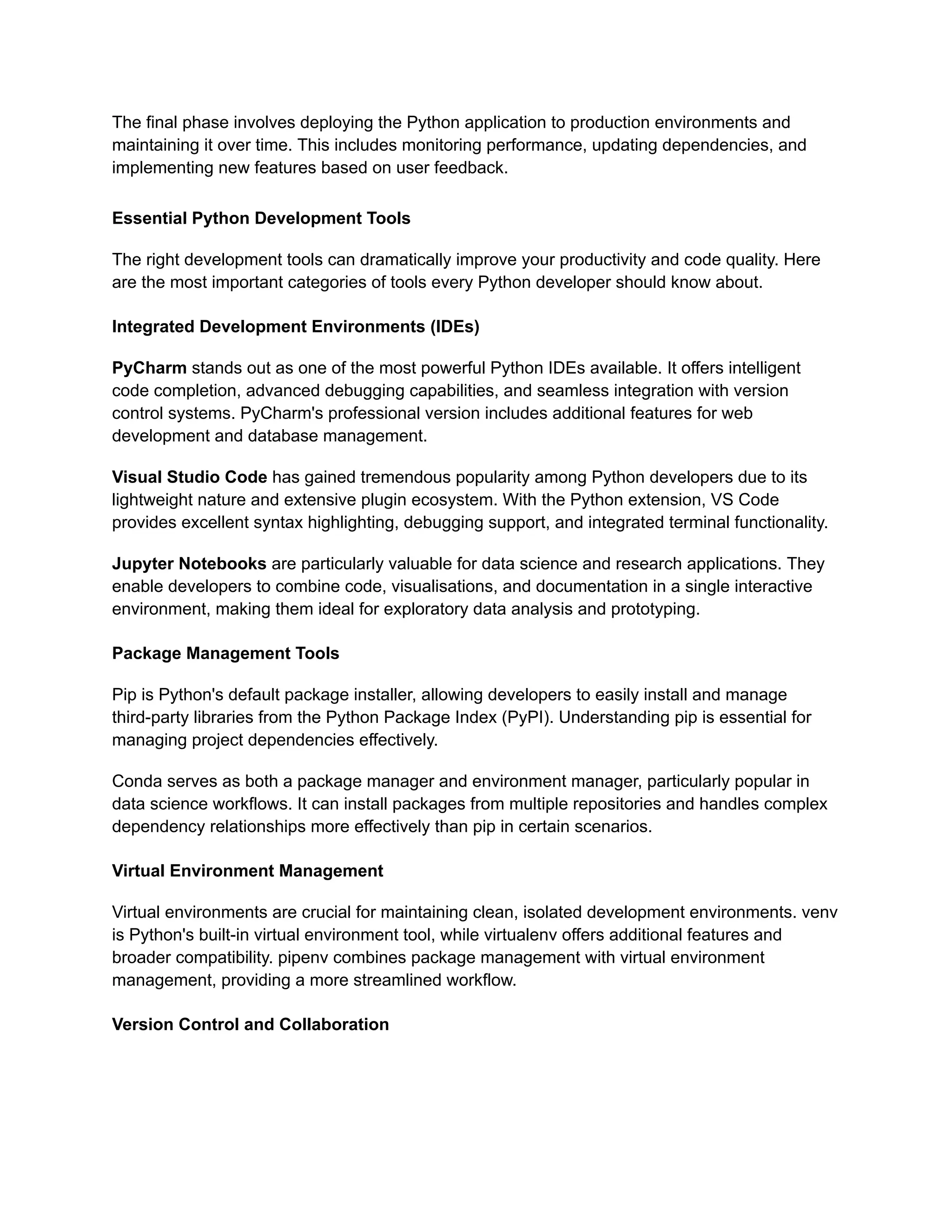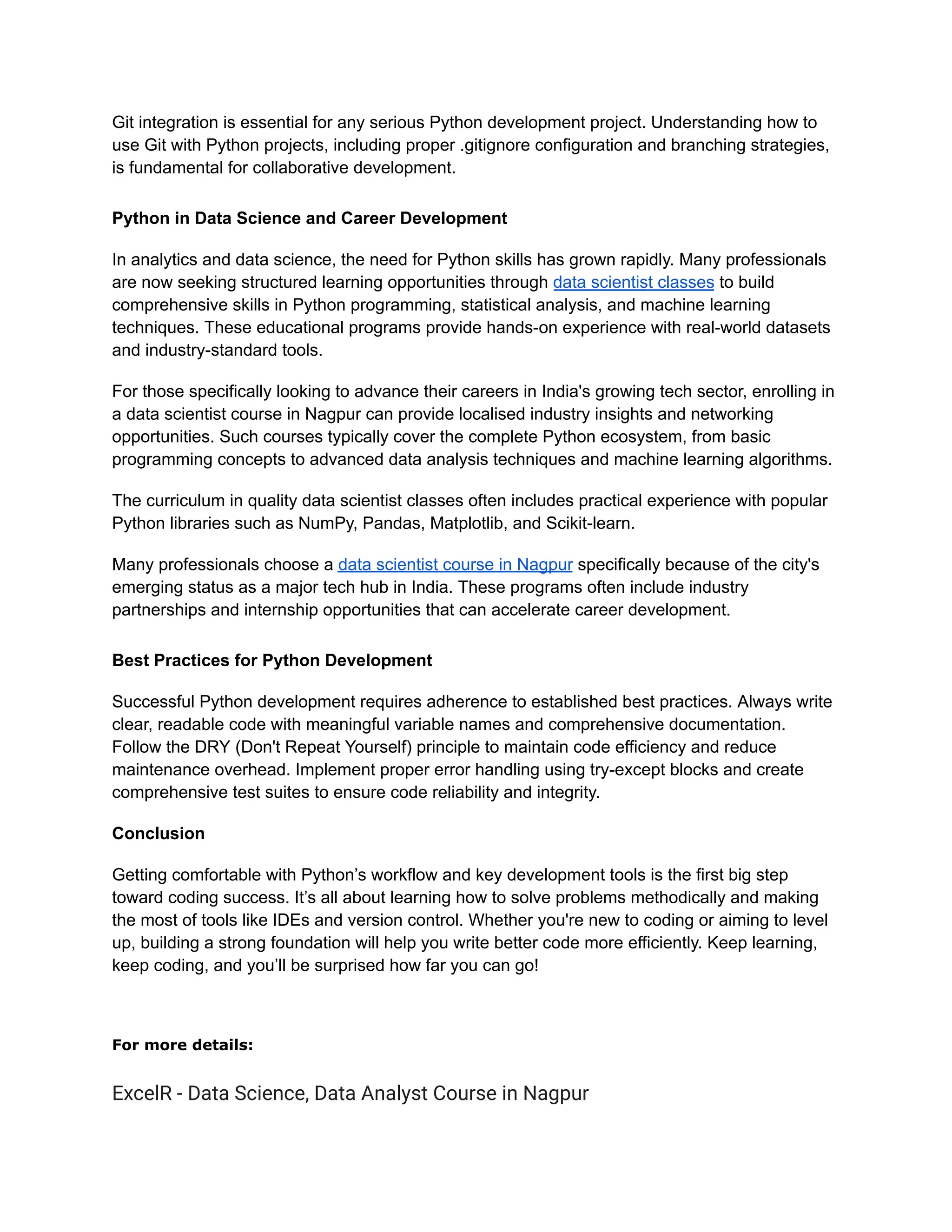Python has emerged as one of the most versatile and beginner-friendly programming languages in the tech world. Whether you're building web applications, analysing data, or developing machine learning models, understanding Python's programming cycle and the essential development tools can significantly enhance your coding journey.



